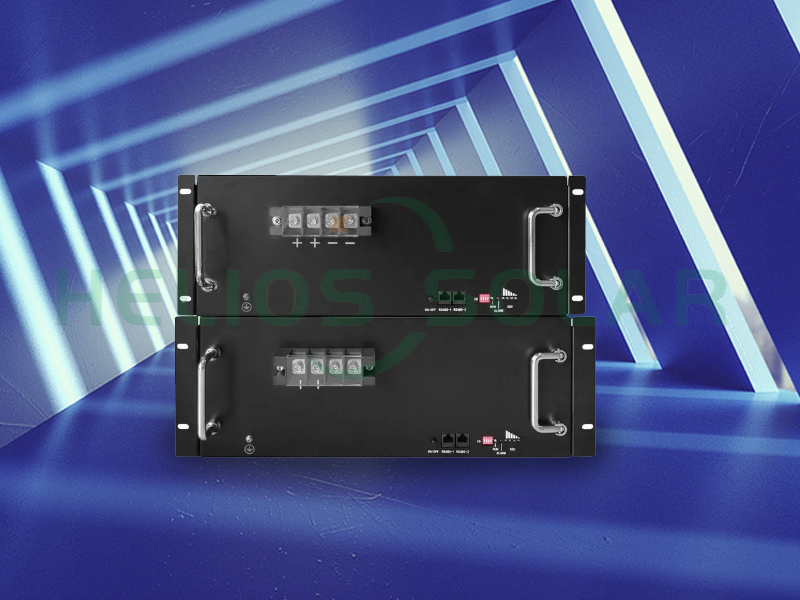In today’s fast-paced digital world, ensuring your critical systems remain operational during a power outage is critical. For enterprises and data centers, reliable power backup solutions are critical. Rack-mounted lithium battery backups are a popular choice due to their high efficiency, compact design, and long life. However, determining the correct size for a rack-mounted lithium battery backup can be a daunting task. This article will guide you through the necessary considerations and calculations to find the product that best suits your needs.
Learn about rack mount lithium battery backup
Before we get into the dimensions, it’s important to understand what a rack-mounted lithium battery is. These systems are designed to provide uninterruptible power supply (UPS) to critical equipment in server racks. Unlike traditional lead-acid batteries, lithium batteries offer several advantages, including:
1. Longer service life: The service life of lithium batteries can reach 10 years or more, which is significantly longer than that of lead-acid batteries.
2. Higher Energy Density: They deliver more power in a smaller footprint, making them ideal for rack-mount applications.
3. Charges Faster: Lithium batteries charge faster, ensuring your system is ready in less time.
4. Light Weight: The reduced weight makes installation and maintenance easier.
Key considerations for sizing
When sizing a rack-mounted backup lithium battery, there are several factors to consider:
1. Power requirements
The first step is to evaluate the power requirements of the device you want to back up. This involves calculating the total wattage of all devices that will be connected to the backup battery. You can find this information through the device specifications or by using a wattmeter.
2. Runtime requirements
Next, consider how long backups need to last during an outage. This is often called “runtime”. For example, if you need to keep the system running for 30 minutes during a power outage, you need to calculate the total watt-hours required.
3. Inverter efficiency
Remember, the inverter converts DC power from the battery to AC power from the device, with an efficiency rating. Typically, this range is 85% to 95%. This must be factored into your calculations to ensure you have adequate capacity.
4. Future expansion
Consider whether you will need to add more equipment in the future. It’s wise to choose a battery backup that can accommodate potential growth, allowing more equipment to be installed without having to replace the entire system.
5. Environmental conditions
The operating environment of the battery also affects its performance. Factors such as temperature, humidity, and ventilation should be considered as they affect battery efficiency and lifespan.
Calculate the appropriate size
To calculate the appropriate size for rack-mounting a backup lithium battery, follow these steps:
Step 1: Calculate total power
Add up the wattage of all the devices you plan to connect. For example, if you have:
- Server A: 300 watts
- Server B: 400 watts
- Network switch: 100 watts
Total wattage = 300 + 400 + 100 = 800 watts.
Step 2: Determine required run time
Decide how long you want your backups to last. For this example, assume you require 30 minutes of run time.
Step 3: Calculate required watt hours
To find the required number of watt-hours, multiply the total wattage by the required operating time in hours. Since 30 minutes is 0.5 hours:
Watt hours = 800 Watts × 0.5 hours = 400 Watt hours.
Step 4: Adjust inverter efficiency
If your inverter is 90% efficient, you need to adjust the watt hours accordingly:
Adjusted watt hours = 400 watt hours / 0.90 = 444.44 watt hours.
Step 5: Choose the right battery
Now that you have the watt-hours you need, you can choose a rack-mounted lithium battery that meets or exceeds this capacity. Many manufacturers provide specifications that include the total watt-hour count of their battery system, making it easier to find the right choice.
In conclusion
Choosing the right size rack-mounted lithium battery is critical to ensuring the reliability of critical systems. By carefully evaluating your power needs, uptime needs, and future expansion plans, you can make informed decisions to keep your operations running smoothly during outages. With the benefits of lithium technology, investing in a quality battery backup system can not only increase your operational resiliency but also help create a more sustainable energy future. Whether you manage a data center or a small business, understanding your power needs is the first step to ensuring your operations are protected from unexpected disruptions.
Post time: Oct-31-2024


